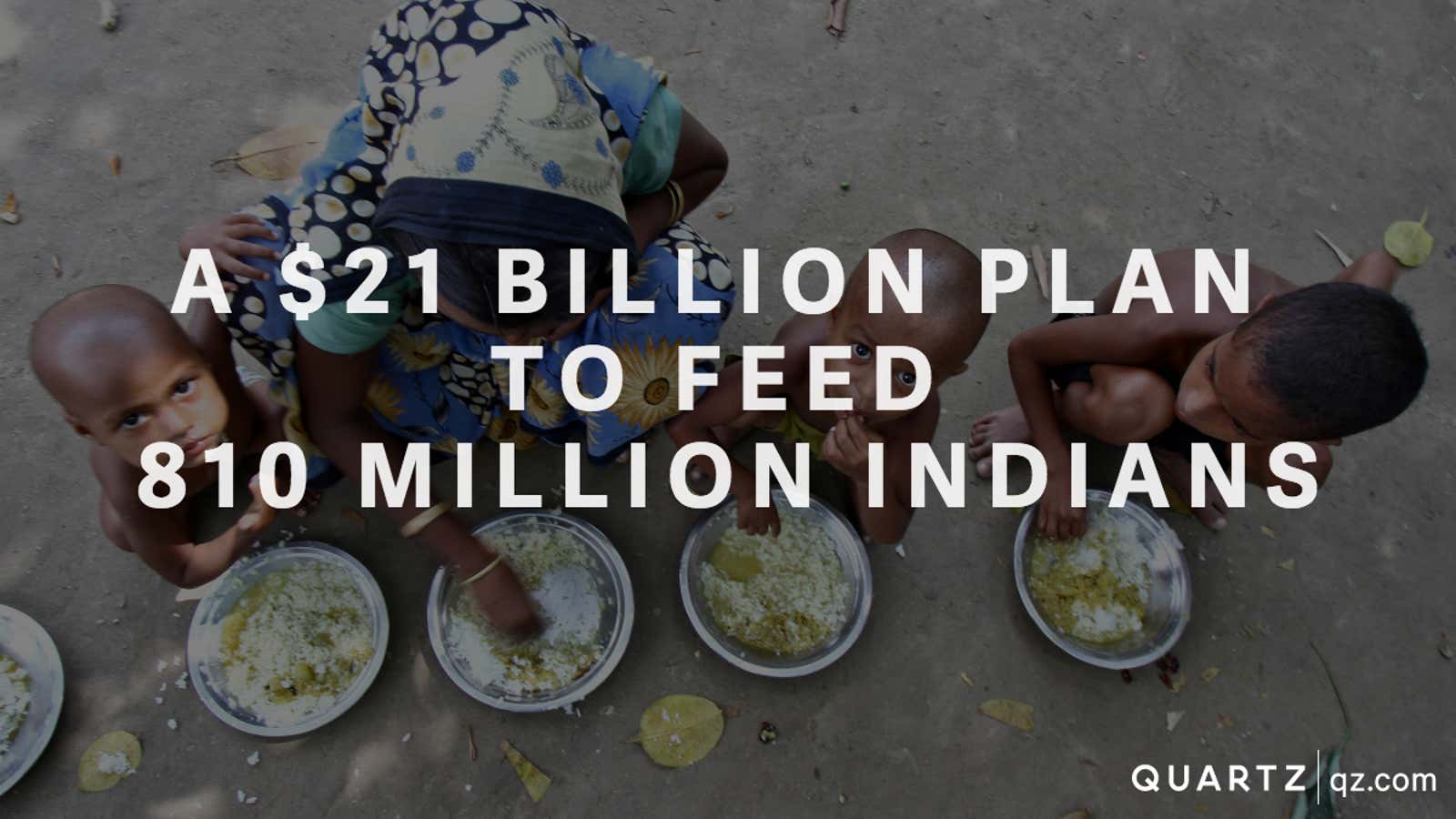India’s government is embarking on an ambitious program to make food a legal right for two-thirds of its 1.2 billion population. The Food Security Bill, which was passed by ordinance but needs to be ratified by parliament, is being promoted by the government as India’s best shot at combating chronic malnutrition and hunger. Critics argue that the program is designed to gain favor with rural voters ahead of national elections in 2014. Here’s a rundown of the mind-boggling scale of what could be the world’s largest food-subsidy system:
- Two out of three Indians, or around 810 million people, would get five kilograms of subsidized food grains every month. The program would offer food subsidies to 75% of the rural population and 50% of the urban population.
- The government believes the program would push India’s food subsidy bill by 45% to 1.3 trillion rupees ($21 billion) a year. Critics estimate the cost could be as high as two trillion rupees a year.
- The plan would dent India’s fiscal credibility. The program is projected to push up India’s fiscal deficit to 5.1% of GDP in the current fiscal year. The government has promised to keep that deficit under 4.8%.
- Another big worry is that the plan will be implemented via the inefficient and corrupt public distribution system. About 10% of India’s food rots in warehouses before it is distributed.
- But the plan could be a boon for the poorest Indians hit hard by rising inflation. The plan could cut expenses of households by up to 8%, according to Crisil Research.
- Despite the economic boom over the last decade, India ranks 65th out of 79 countries on the Global Hunger Index. Nearly half of India’s children under five are chronically malnourished.
Photo illustration by Quartz. Photo by Reuters/Utpal Baruah.
